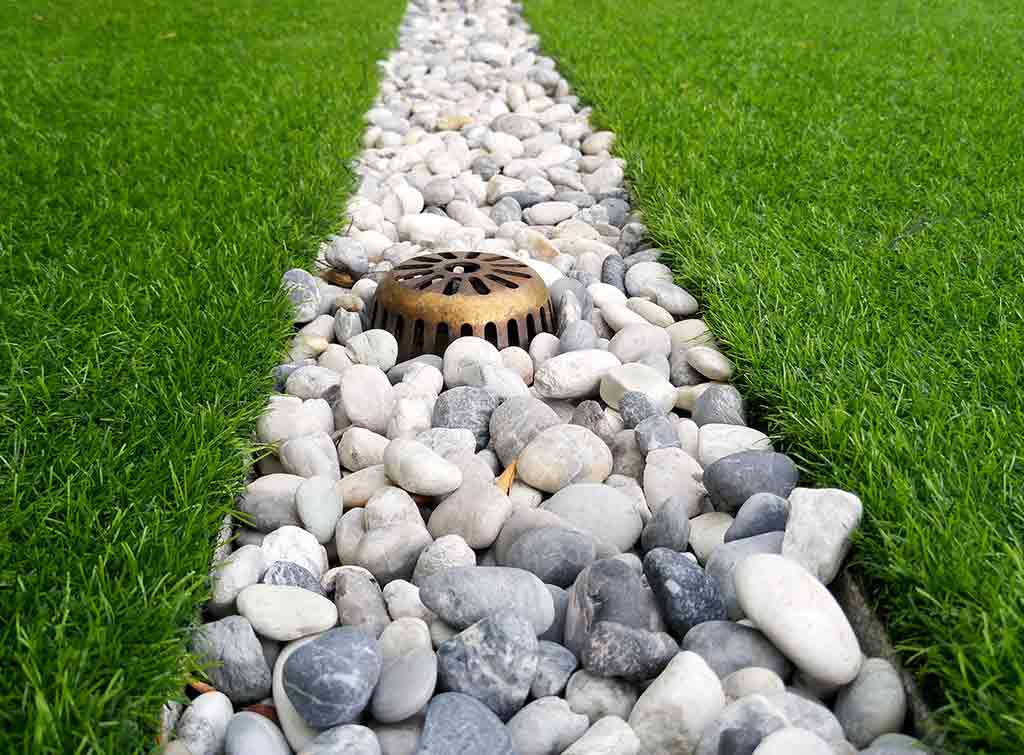Blog>Expert Advice>What is a percolation test?
Last updated: 18 September 2024
What is a percolation test?
A percolation test measures how effectively water is absorbed into the ground. Here’s all you need to know.

If you’re planning to install or replace a septic tank, you’ll need a percolation test first. But what is a percolation test? And what’s it for?
What is a percolation test?
A percolation test, otherwise known as a 'perc test', measures how effectively water is absorbed into the ground.
This is done by digging a hole in the ground, saturating it with a measured amount of water, and recording how long it takes for the water to drain away.
What is the purpose of a percolation test?
A percolation test can help you to understand whether your soil provides suitable drainage for your intended purpose and the quantity of water that needs draining.
This can be useful in lots of different scenarios – for instance, if you’re planning the design of a building or determining whether land is suitable for agricultural use.
But most often, homeowners need a percolation test because they’re installing or replacing a septic tank or sewage system in the grounds of their property.
What is percolation and why is it important?
Percolation is the process of water moving through soil and into groundwater, with the help of gravity.
The rate of percolation is how quickly this happens – and will depend on lots of different things, such as your soil’s hydraulic conductivity and water content.
If water can’t move through the soil quickly enough, this can lead to a swamp of sewer water.
Not only is this unpleasant (think of the smell!), but it’s a major health hazard and could even cause serious damage to your home.
What preparation is needed for a percolation test?
Before you carry out a percolation test in England, you'll need to have already completed a 'Groundwater Source Protection Zone search' and a 'Trial Site Assessment hole'.
Both of those steps will ensure that any sewage system that's installed won't contaminate local groundwater sources (which supply drinking water).
It's crucial that you carry out the first two steps, otherwise your percolation test will be a waste of time and you could fail to get planning permission for your sewage system.
See the tradespeople we've checked and recommend for your job
How do you do a percolation test?
Once you’ve completed your ‘Groundwater Source Protection Zone search' and 'Trial Site Assessment hole,’ you can finally get round to doing your percolation test.
Bear in mind that the test will look slightly different depending on whether you’re hoping to install a soakaway for foul water or surface water drainage.
If you’re installing or replacing a septic tank, you’ll be looking at a foul water discharging soakaway – here’s what the process will look like.
1. Decide where to dig your test holes
The first step is to work out where to dig your test holes. You’ll need at least two.
These should be located where you’re planning to install your foul water drainage field – so, at least 10 metres away from any watercourse, 15 metres away from any building and 50 metres from any water supply.
2. Dig the test holes
Next, dig your test holes.
These should be 300mm x 300mm wide and at least 300mm below the proposed invert level of the outlet pipe in depth.
3. Fill with water
Clear any loose debris – such as stones – from the holes.
Then, mark out a depth of 300mm inside the test holes and fill them with water up to this point.
4. Wait for the water to drain away
Now, you simply need to wait for 6-12 hours for the water to drain away.
If it hasn’t drained away within this time, unfortunately, the percolation test has failed. This means your soil is too dense to install a soakaway.
If, on the other hand, the water has drained successfully, you can continue onto the next step.
5. Work out the percolation rate
Now, you can work out the percolation rate:
Refill the test holes up to a depth of 300mm
Time how long it takes for the water to drop from 225mm (¾ full) to 75mm (¼ full), in seconds
Divide the figure by 150
The number you get is the average time in seconds for the water level to drop 1mm – known as the Vp.
6. Repeat
Carry out these steps at least three times for each test hole, ideally at different times of the day.
Then, calculate the average Vp number across all the tests to get your soil’s percolation rate.
Top tip – Never carry out your percolation test during extreme weather conditions, as you won’t get an accurate result.
See the tradespeople we've checked and recommend for your job
What is a good percolation test result?
A good percolation test result is a Vp number somewhere between 15 and 100.
If your Vp number falls within this range, you can install a soakaway field.
This is because the percolation rate will be slow enough for the effluent to be sufficiently treated before reaching groundwater.
At the same time, it’ll be quick enough for the effluent to disperse into the ground, preventing your septic tank from backing up.
All that remains is to determine the most suitable size of drainage field.
To do this, you need to multiply the Vp number by the number of people that the sewage tank or system is designed to serve.
Then, multiple this number by 0.25 for septic tanks, or 0.20 for sewage treatment plants.
This will give you the area in m² required for your drainage field.
Can you carry out a percolation test yourself?
You might be able to carry out your percolation test yourself, but it depends on your council.
While some will be happy to accept the results of your own test, others will want to see that your test has been carried out by a qualified professional.
That said, either way, getting a professional to do your percolation test is by far the safest option.
An expert will make sure your test is carried out correctly, so that you get the most accurate and useful results.
This is key to confirming your ground’s suitability for a soakaway, and making sure your drainage field is sized correctly.
The last thing you want is a swamp of sewage water surrounding your home!
Find a professional for percolation testing
Ready to get a percolation test?
All our tradespeople have to pass up to 12 checks to get listed on our directory and are regularly reviewed by homeowners.
In fact, we’re so confident in the quality of the trades on Checkatrade that if you book through us, we guarantee their work up to £1,000 (guaranteed for 12 months – Eligibility and T&Cs apply).
Enter your postcode into the search box below to get started.
See the tradespeople we've checked and recommend for your job
More Expert Advice Articles
More Septic Tank Installation Articles
See the tradespeople we've checked and recommend for your job





